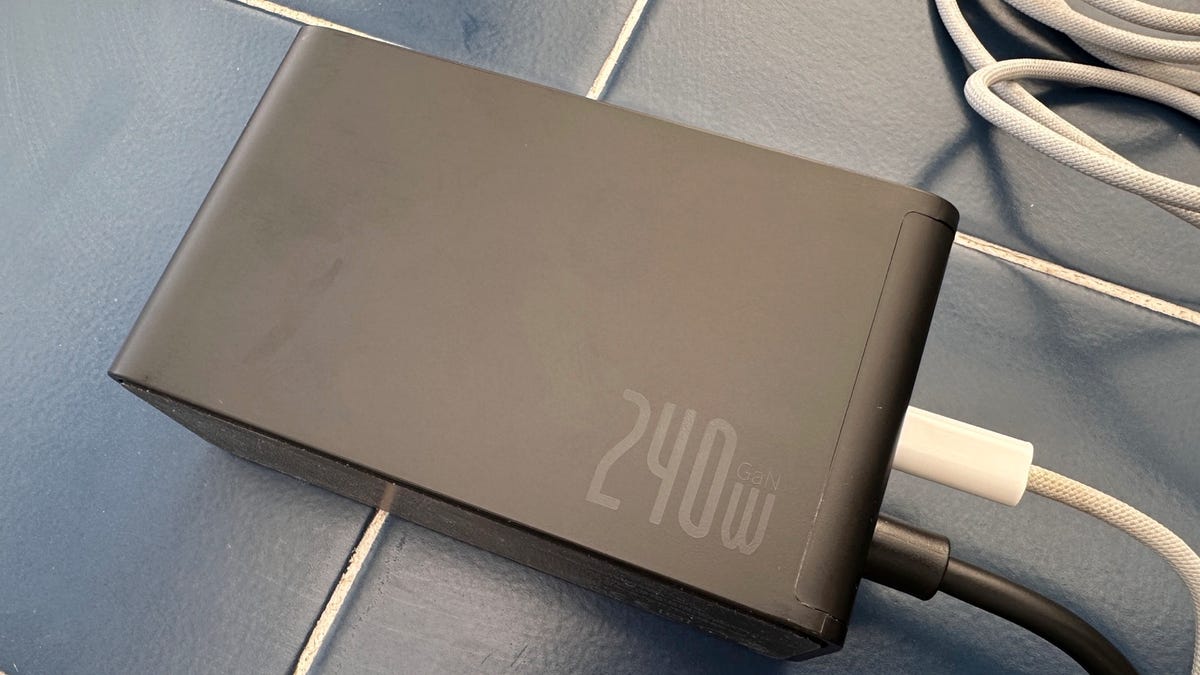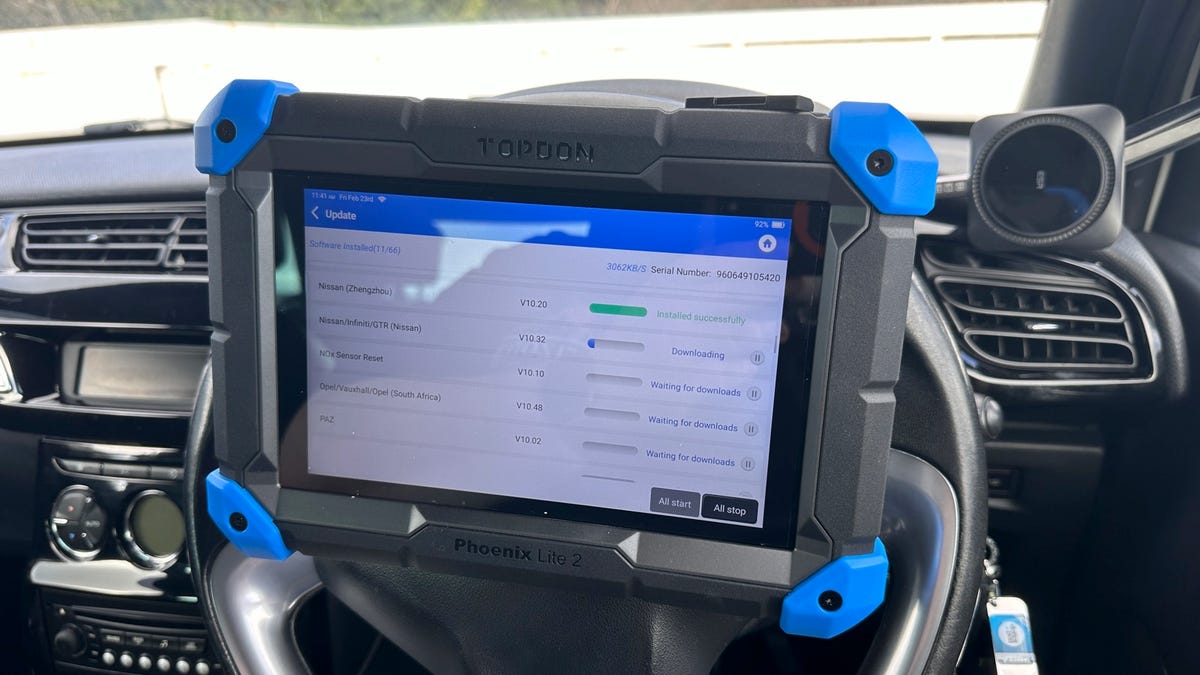BOOK THIS SPACE FOR AD
ARTICLE AD
Starlink Hurricane Helene Coverage Map
I like SpaceX's Starlink. Its low-Earth orbit (LEO) satellite constellation delivers good speed and low latency to rural users who would otherwise be stuck with DSL or even -- seriously -- dial-up modem internet connections.
Recently, Starlink made headlines with a seemingly generous offer: "Starlink is now free for 30 days" for those affected by Hurricane Helene. However, when you look at the fine print, it looks more like an advertisement than the humanitarian aid it was initially portrayed to be.
Also: How to use Android's emergency satellite texting if you lose cell signal
True, Starlink announced free service for 30 days in hurricane-affected areas. People in my hometown of Asheville, North Carolina, are signing up in droves. Our local internet services are largely still not working. But, the free Starlink service has a big catch: Users are still required to purchase the hardware. The Starlink terminal, generally priced at $350, is reportedly discounted to $299 for disaster relief. However, the total cost comes to nearly $400 when factoring in shipping and tax.
The automatic subscription model is another aspect of the offer that has raised eyebrows. After the 30-day free period, new customers who qualify for free access will be automatically moved to a paid $120-a-month residential subscription tied to the location where the terminal was set up. So, is this really disaster relief or just advertising?
Also: 5 hurricane-tracking apps I'm using to keep an eye on Hurricane Milton
As one Starlink user on X observed, "It is great to have Starlink service in these areas; I am a happy customer myself. I am also one that sells services, this is just standard operating procedure for a business and nothing special outside of the first 30 days being free for a subscription in perpetuity."
Indeed, that free first 30 days isn't that special either. According to Starlink's documentation "If you purchased a Starlink Kit through a retailer or third-party, and you activate service as a new account via starlink.com/activate, you will be charged for the upcoming month of service immediately."
But "you may return an undamaged, untampered, and unmodified Starlink Kit and any accessories within 30 days of receipt for a full refund for any reason, including the inability to receive Services due to field-of-view issues."
As one Reddit user put it, "And it's only free for 30 days, then it automatically starts charging $120 per month. It's the exact same free trial that you could already get before the hurricane. They are advertising it as disaster relief, but it's really just a marketing campaign. This isn't even a new thing."
Also: How to use your iPhone's emergency satellite features if you lose cell coverage
It's worth noting that while Starlink's offer has garnered attention, it's not the only relief satellite internet effort in place. The Federal Emergency Management Agency (FEMA) has been actively involved in hurricane relief, providing over $20 million in aid to survivors and deploying its own Starlink units to support emergency communications. These units, however, are for organizations, not individual users.
Earlier, Elon Musk, Starlink's CEO, had complained about FEMA preventing Starlink from flying Starlink terminals into the area. Transportation Secretary Pete Buttigieg stepped in and explained that the emergency made normal flights impossible. The two talked and came to an agreement, and Musk said, "Thanks for expediting approval for support flights. I just wanted to note that Sec Buttigieg is on the ball."
That said, almost all Starlink customers in the disaster areas will get their terminals in a few weeks via the usual shipping services.
Other internet and telecom services are helping. Charter/Spectrum announced its nearly 45,000 Spectrum WiFi hotspots will remain open in Florida in advance of Hurricane Milton. These Wi-Fi access points were originally opened to the public on September 26, ahead of Hurricane Helene. They will remain open in communities that are expected to be impacted by Milton, including Tampa, Orlando, Bradenton, St. Petersburg, and Melbourne, Florida. Of course, it's an open question as to whether these hotspots will stay in service. In my area, they were knocked out by Hurricane Helene.
Speaking of Milton, T-Mobile and Starlink will use the Starlink service Direct to Cell satellites to provide emergency alerts for all phones and carriers of those in affected areas. In addition, T-Mobile users will be able to use basic texting by satellite. However, as SpaceX noted, "If a phone connects to a Starlink satellite, it will have 1 to 2 bars of signal and show 'T-Mobile SpaceX' in the network name. Users may have to manually retry text messages if they don't go through at first, as this is being delivered on a best-effort basis. The service works best outdoors, and occasionally works indoors near a window." This service is free.
Also: I'm a tech pro - but when a hurricane hit my mountain home, the disconnection shocked me
Satellite is the sole internet service you can count on during a disaster. So long as you've got a clear view of the sky, a subscription, and power, you'll still be online. Besides Starlink, HughesNet and Vianet offer satellite internet at similar prices and speeds but with far greater latency.
To sum up, while Starlink's offer of free service for Hurricane Helene victims sounds good, it's not all it's cracked up to be. That said, if you get the service with your eyes open to its full terms and costs, Starlink may be exactly what you need, whether you're facing a natural disaster or just need fast internet in a remote place.
.png)
 1 month ago
16
1 month ago
16 














 Bengali (Bangladesh) ·
Bengali (Bangladesh) ·  English (United States) ·
English (United States) ·